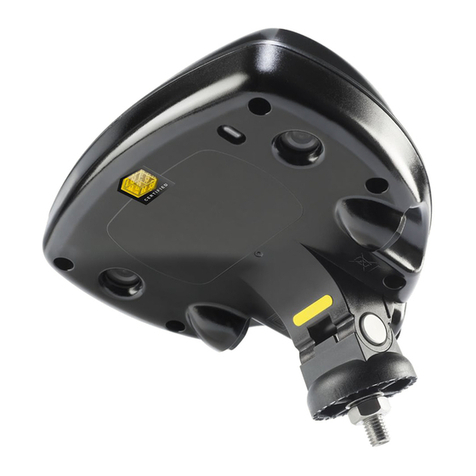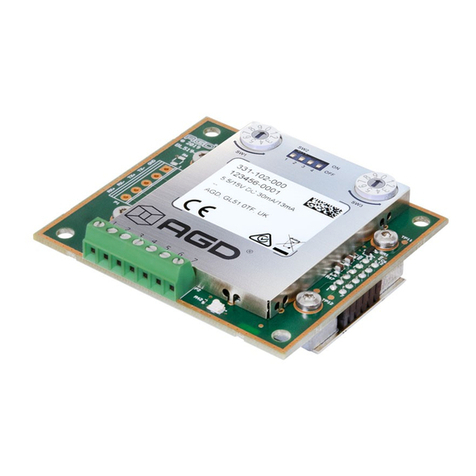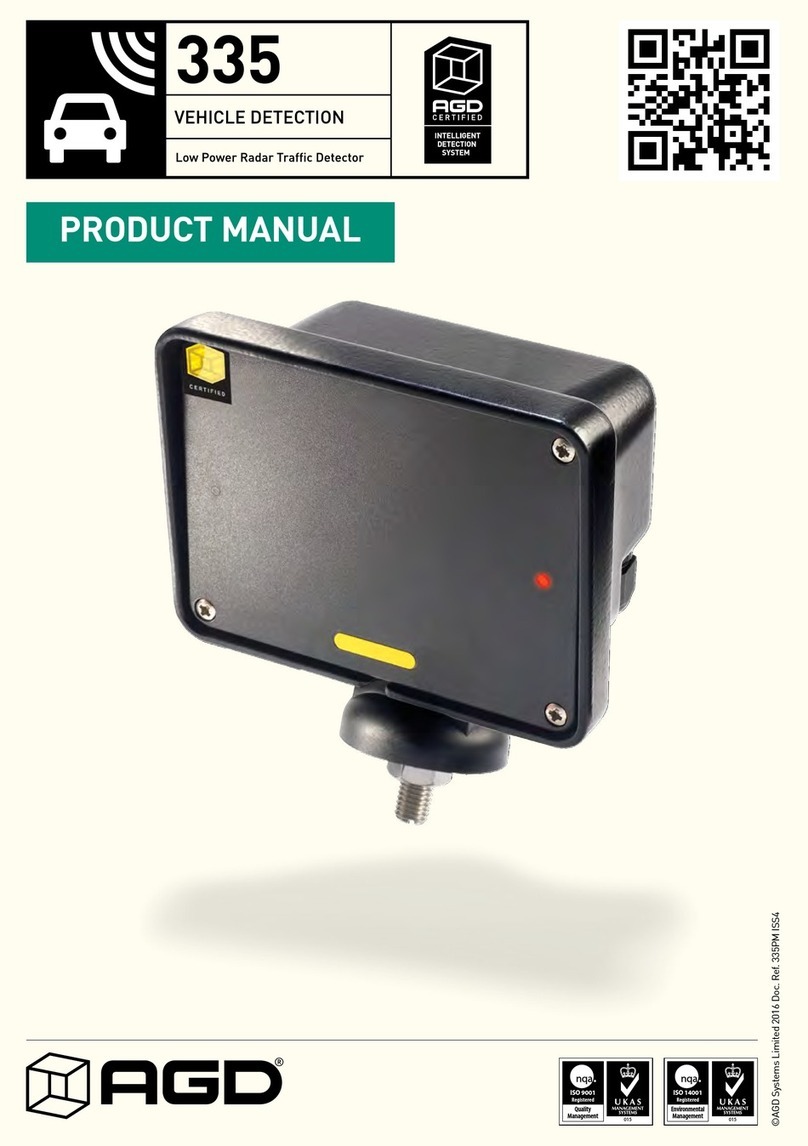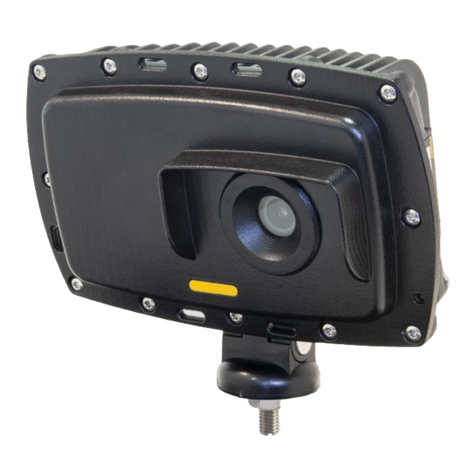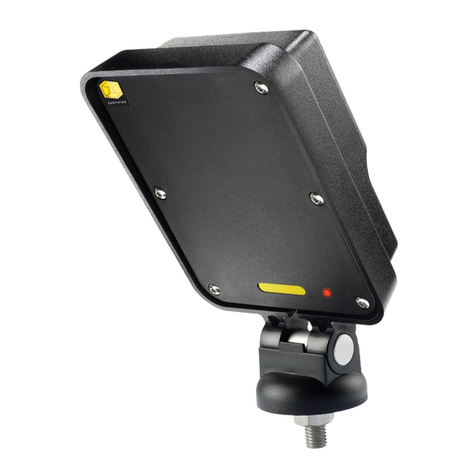6
INSTALLATION
RADAR MOUNTING
Installation of the radar within the sign should be in
accordance with the table below which specifies the
spacing (D) of the radar module PCB assembly from the
inside front surface of the sign. These measurements
are based upon a typical polycarbonate fascia and have
been tested to provide optimum radar performance.
In the instance of different thickness front panel
materials, customers are advised to contact AGD
systems for further information and technical support.
Standard fixing of the radar module is based upon a set
of four mounting holes with the dimensions shown in
the diagram on the right.
The recommended material situated in front of a K-Band radar is 4mm thick polycarbonate.
The relatively wide beam profile of the K-band radar module ensures good detection coverage of single or dual
lane approaches with relatively little adjustment of the sign in relation to the direction of approaching targets.
Mounting of the radar within the sign is recommended at between two and five metres from the ground
(optimum 3m).
D=15mm
62mm
55mm 65mm
The radars planar antenna
should be 90
0
to the road
surface, inclines in the road
surface should be catered
for by adjusting the 331
radars mounting angle.
Front screen material thickness Recommended Spacing D Comments
0.5mm 15mm +/- 1mm Spacing for 0.5mm material is not critical
1.0mm 15mm +/- 1mm
2.0mm 15mm +/- 1mm
3.0mm 15mm +/- 1mm
4.0mm 15mm +/- 1mm Spacing for 4mm material is not critical
5.0mm 15mm +/- 1mm
6.0mm 15mm +/- 1mm
Holes 4mmØ






